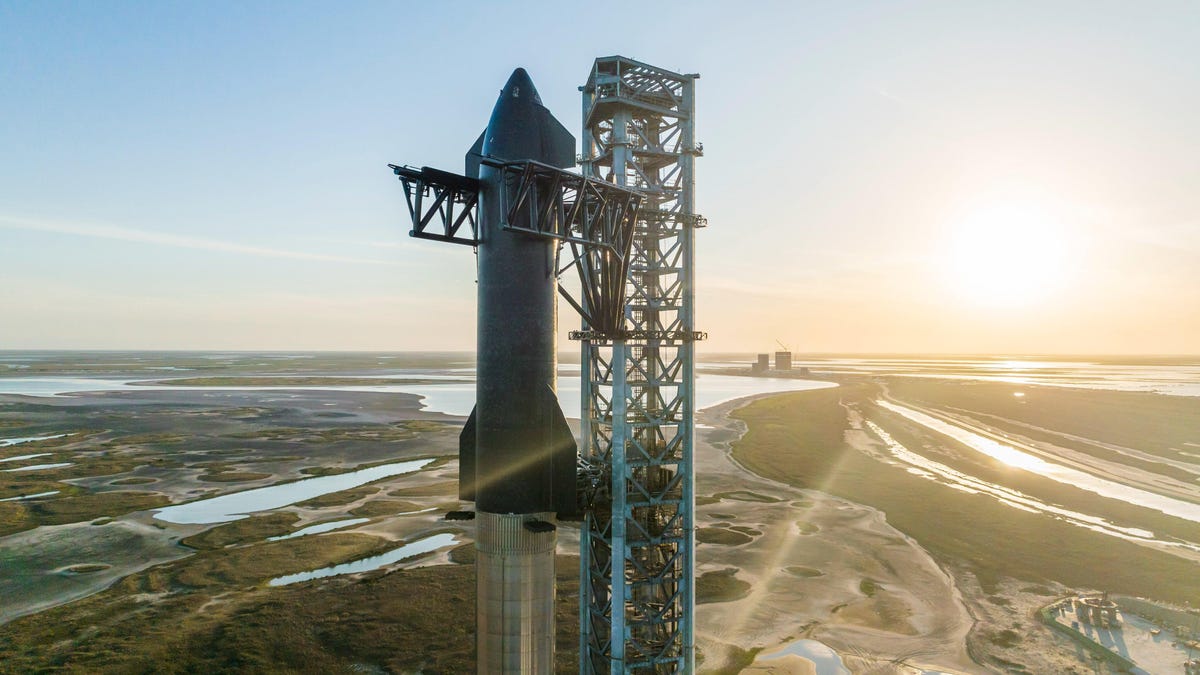Elon Musk Says Starship Rocket Could Go to Space as Soon as Next Month
For Musk, the short trip to space is a big step on the way to the moon and Mars.

Starship atop Super Heavy.
The next flight of Elon Musk's next-generation space vehicle, Starship, seems as though it's been just a few months away for over a year now. But now the SpaceX founder's ambition to send his magnum opus rocket to orbit for the first time in the coming weeks is beginning to feel more possible.
When asked on Twitter Wednesday when the first orbital flight of Starship might finally happen, the world's richest man replied, "Late next month maybe, but November seems highly likely."
A Starship prototype labeled SN15 completed a high-altitude flight (within Earth's atmosphere) and landed without exploding on May 5, 2021. That's the last time the spacecraft, which NASA hopes to use to send Artemis astronauts back to the lunar surface, has left the ground.
Since then, Musk and SpaceX have been busy preparing for the first orbital demonstration flight of Starship, which will see the vehicle blast off atop a Super Heavy Booster for the first time. Just this week the massive first-stage booster was fired up on the test stand for the first time with seven engines blasting. That's more than double the number of engines of the previous test and less than a quarter of engines that will make up a fully loaded Super Heavy, which is designed to launch with 33 total engines.
In addition to completing testing and getting Super Heavy ready to go, SpaceX needs a launch license from the Federal Aviation Administration before it can launch Starship (not that this requirement has always stopped the company in the past).
So ultimately, all eyes are on the FAA, which gave SpaceX a tentative approval when the launch plan passed a key environmental review in June, but with 75 required changes to the mission profile that need to be completed before the license is handed over.
Meanwhile, Musk is hoping to do a full "wet dress rehearsal" of the launch and test fire a 33-engine Super Heavy for the first time in the coming weeks.
When Starship and Super Heavy finally launch together, the test flight will send the former for a brief trip to orbit followed by a splashdown off the coast of Hawaii while Super Heavy comes in for a landing attempt on a modified oil rig in the Gulf of Mexico.

